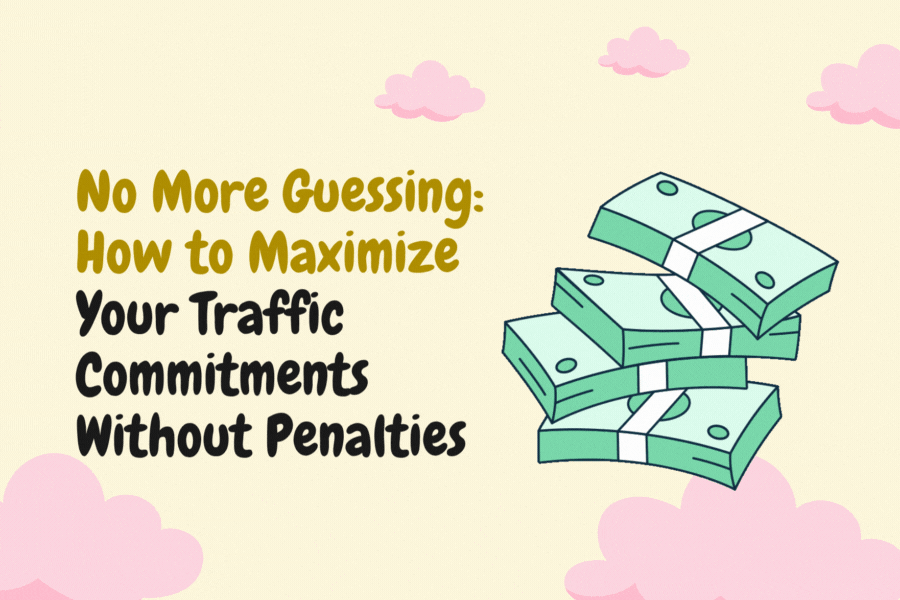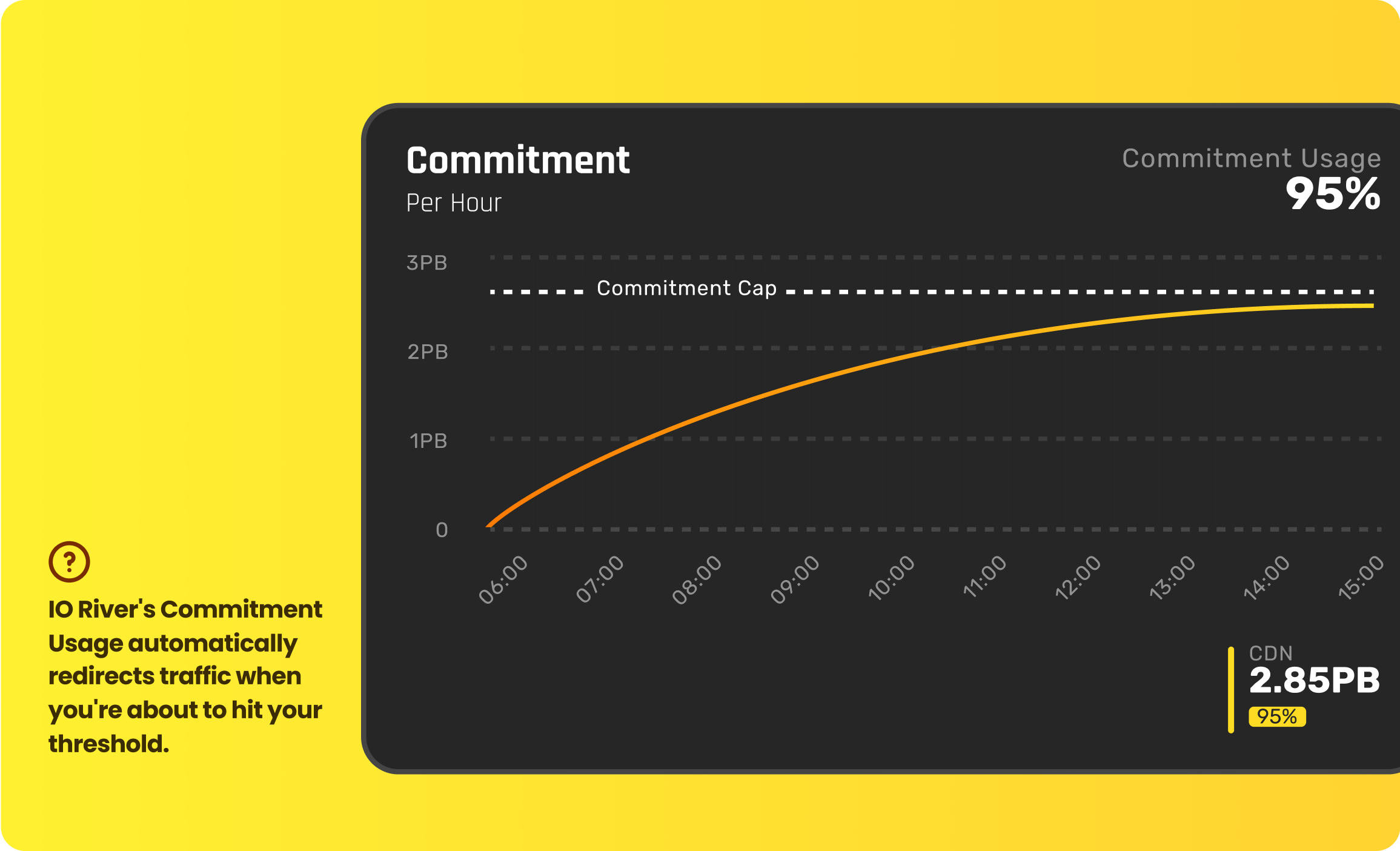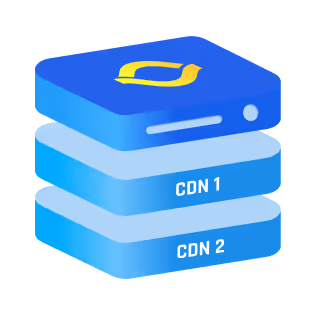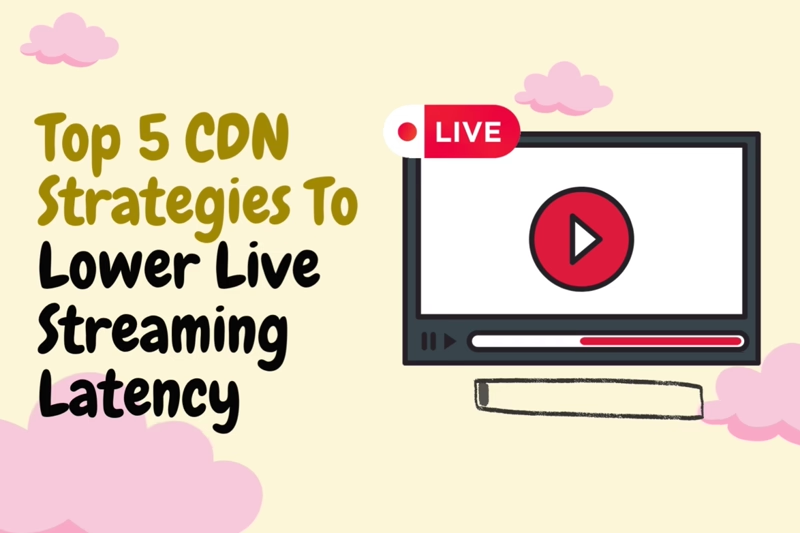No More Guessing: How to Maximize Your Traffic Commitments Without Penalties
Most teams treat commitments as simple traffic targets. But usage-based penalties often come from what you’re not watching: request counts, cache ratios, and regional behavior. We break it down.

Commit-based pricing saves money. Until it doesn’t.
For many infrastructure teams, it’s one of the few reliable ways to lower delivery costs without compromising performance. But getting full value from a commitment means more than hitting a traffic target. You also need to stay within request limits, cache thresholds, and provider-specific terms.
That balance is hard to track without the right tool.
This post breaks down how commit-based pricing works in practice, where it gets complicated at scale, and how IO River’s new Commitment Usage feature helps you stay on track. If you're managing delivery budgets, traffic strategy, or Edge cost optimization, keep reading. We’ll show you how to make your commitments work for you, not against you.
The FinOps Reality Behind Commit-Based Pricing
Commit-based pricing works best when your usage stays in the middle ground. Hit your target, and you reduce cost per gigabyte. Miss it in either direction, and the savings disappear.
Underusing your commitment means you’re paying for capacity you didn’t use. Overusing it—especially in request-heavy environments—can trigger rate hikes, penalty clauses, or renegotiation thresholds.
The complexity doesn’t stop at traffic volume. Many contracts include terms tied to cache hit ratios, or request ceilings. These variables are easy to overlook until the bill shows up.
For teams managing delivery at scale, the challenge isn’t just traffic volume. It’s keeping everything aligned with the pricing model in real time.
The Blind Spot Most Teams Have
Most infrastructure teams track how much traffic they deliver. But commitments are defined by more than raw volume. Request limits, cache ratios, and provider-specific thresholds all shape the outcome — and most of that detail lives in the contract, not in your monitoring tools.
For fast-growing or high-variance workloads, it’s easy to lose track. Without active visibility, monthly commitments often end with unused traffic. Annual contracts are harder to manage, since long-range forecasting rarely holds up under real usage patterns.
Commitment usage isn’t a set-and-forget metric. It changes with your traffic. If you’re not watching it, it slips.
IO River’s Commitment Usage Feature
IO River tracks how your delivery aligns with the terms that actually matter. The Commitment Usage feature monitors:
- Traffic volume
- Request counts
- Cache performance and related thresholds
You can set alerts when usage trends toward underutilization or penalty risk. It supports both BYO contracts and IO River-managed accounts.
All tracking runs across your providers in one place. No toggling between vendor dashboards. No reconciling usage after the fact.

Why It Matters
Commitment Usage gives teams control over a cost lever that usually runs blind. It helps you:
- Use your full commitment without crossing penalty lines
- Avoid billing surprises tied to request volume or cache ratios
- Plan usage around traffic spikes or seasonal demand
- Optimize cost without compromising delivery performance
Commitment Usage is a real-time control surface for teams actively managing traffic and spend.
See It In Action
Want to see how your delivery usage aligns with contract thresholds?



.png)
.png)
.png)





